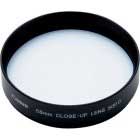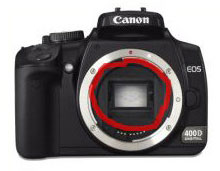Listed below are a few useful SLR photography tips for beginners. Particularly those progressing from a point and click camera to a digital SLR camera. Note, these are basic DSLR photography tips for beginners that I wish I had read when first starting out.
If you’re after more technical information on how to use your camera, then we recommend reading our articles on: DSLR Settings.
Or maybe you’re looking for hundreds of SLR photography tips for beginners that include example images and ‘How To’ guides: SLR Photography Tips.
Before you go away however, read these 12 important DSLR photography tips for beginners. They will help get you off to a great start!
DSLR Photography tips For Beginners
- Number one SLR photography tip for beginners. Don’t throw your camera manual away.
It will become your new best friend. Read it as often as possible, especially in the first couple of months after purchasing your DSLR camera. Always store it somewhere handy. For example in your camera bag. - Buy a UV filter for each lens you own.
It’s easier to replace a scratched lens filter than it is to replace your actual lens.
- Learn to use all your SLR camera settings.
Even those you don’t think you’d ever use. Practice changing settings like ISO, aperture and shutter speed, so you know them like the back of your hand. A moving animal won’t sit and pose until you work out your settings.
- In addition to UV filters, other important pieces of equipment should include a sturdy tripod and a remote release.They both come in handy for taking photographs that require long shutter speeds.
- You can never have enough SLR / DSLR photography magazines and books to learn from.
The best ones will explain what camera settings were used, along with each photograph displayed. - Don’t touch or blow on the mirror inside your camera body when you have the lens off.If you damage the sensor, you may as well buy another camera body, because that’s how much it will cost to fix. If you notice spots appearing in your photos, buy a cleaning kit or dust blower from your local camera store. Many now have an in-house cleaning service which is always a good alternative.
- Don’t change your lens outside if it’s windy.
Put the main lens on your camera before you leave the house. If you need to change the lens outside, face the camera body downwards. Dust can’t fall upward onto the camera’s sensor. - If at first you find your getting a lot of blurred photo’s, change to a fast shutter speed.
The faster the photograph is taken, the less chance there is of it being effected by camera shake.Holding the camera closer to your body or resting it on a nearby object is also a good tip. If you’re taking nature shots, steady yourself by leaning against a tree. - When you buy a digital camera bag, think about the future.
Many photographers on average own at least 3 lenses. Personally I own 2 camera bags. One holds a camera with a single lens. This is useful for times when I know I’ll only be needing one lens. For example, if I’m going out to photograph landscapes I don’t need to lug myself down with all 3 lenses. Or if I’m going out to photograph macro’s, then I don’t need to also carry my landscape lens.My second bag carries my camera and all three lenses. This one is useful for traveling purposes. - Learn what RAW file format is.
Setting your digital camera to shoot in RAW is particularly useful for beginners to SLR photography. If you have your camera’s white balance or picture style set wrong when you take a photograph, you can change this later on with a RAW editor on your computer. A raw editor such as Lightroom or Gimp, which is free to download, will do the job nicely.There will also be many times when you only get one chance to take the photograph. For example, a bird won’t fly past time and time again until you have the cameras white balance set correctly for that specific scene. - The best way to learn what your SLR camera can do, is through experimentation.
If your taking a photograph of running water, try both fast and slow shutter speeds to see for yourself what the difference is. Or if your photographing a beautiful landscape, try different aperture settings.You’ll be surprised at how many photo’s you can get from shooting the same scenery with different settings. - Always press the shutter button half way down to prefocus before going all the way and taking the photograph.This is one of the most useful DSLR photography tips I share with all beginners, as it will usually result in clearer photo’s every time. It is also especially useful when you can anticipate where a subject is going to be positioned before it gets there. You can prefocus on that spot by pressing and holding the shutter button half way, then as it comes into view, press the rest of the way down.
Online Photography Course
Sign-up for our online photography course and learn how to take better photos in easy to understand “at your own pace” lessons.
Click here for more information and sign-up details!

